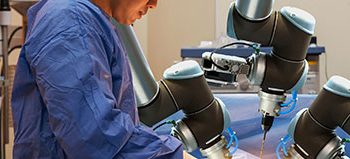Overview of Pain Management Devices
Pain management devices are medical devices designed to provide relief from chronic pain conditions. These devices provide a range of solutions for managing pain, from electrical stimulation and neuromodulation to thermal therapy and drug administration. They are used to treat a variety of conditions, from serious medical conditions such as cancer and arthritis, to milder conditions such as tension headaches. Pain management devices are often used in combination with medication, physiotherapy, and other treatments. These devices have become increasingly popular in recent years as they provide a safe and effective way to manage chronic pain.
Benefits of Pain Management Devices
1. Improved Pain Relief: Pain management devices can help people to reduce the intensity of their pain, meaning they can be more comfortable and have a better quality of life.
2. Increased Mobility: Pain management devices may help to increase mobility, allowing people to move around more freely and with greater ease.
3. Reduced Need for Medication: Many pain management devices are designed to reduce the need for medication, meaning that patients can avoid the side effects commonly associated with some drugs.
4. Cost Savings: By reducing the need for medication, pain management devices can help to save money on healthcare costs.
5. Improved Quality of Life: By reducing pain and increasing mobility, pain management devices can help to improve overall quality of life.
Types of Pain Management Devices
1. Electrical Stimulation Devices: Electrical stimulation devices are used to manage chronic pain by sending electrical pulses to the nerve endings in the body that is experiencing pain. These devices can be used to reduce pain and improve muscle strength and coordination.
2. TENS Units: Transcutaneous Electrical Nerve Stimulation (TENS) units are small, portable devices that send electrical signals to the nerves to reduce pain. They are often used to manage chronic pain in conditions such as lower back pain, nerve damage, and arthritis.
3. Heat and Cold Therapy Devices: Heat and cold therapy devices are used to apply either hot or cold temperatures to an affected area of the body. This type of therapy can help reduce inflammation and manage pain.
4. Massage Devices: Massage devices are designed to provide targeted massage to the area of the body that is experiencing pain. These devices can help to reduce muscle tension and improve circulation.
5. Acupuncture: Acupuncture is a traditional Chinese medical practice that involves the insertion of thin needles into specific parts of the body to help reduce pain. This type of therapy has been used for centuries to manage various types of pain.
Pain Management Devices Industry Growth
According to research report the global pain management devices market in terms of revenue was estimated to be worth $2.2 billion in 2021 and is poised to reach $3.3 billion by 2026, growing at a CAGR of 8.6% from 2021 to 2026.
Recent Developments in the Pain Management Devices Industry
Recent developments in the pain management devices industry have focused on the development of non-invasive treatments and the refinement of existing devices. One of the most recent developments is the availability of new devices that utilize electrical stimulation to provide relief from chronic pain. These devices are designed to send electrical signals to the affected area, relieving pain and providing a more targeted approach to pain management. Additionally, some of the most advanced devices are capable of providing a combination of electrical stimulation and other treatments such as light therapy or cold laser therapy.
Another recent development in the industry is the increased focus on patient-centered care. This includes the use of patient-reported outcomes to assess the effectiveness of pain management devices. This allows clinicians to better tailor treatments to individual patients, as well as track the progress of treatments over time. Additionally, the use of data-driven decision making is becoming increasingly important in the industry, allowing clinicians to make decisions based on the best available evidence.
Finally, the development of telemedicine technology has allowed clinicians to consult with patients remotely. This has allowed for increased access to pain management services, particularly for patients in rural areas who may not have access to a large hospital or specialized clinic. Additionally, it has allowed clinicians to provide more personalized.
Related News:


